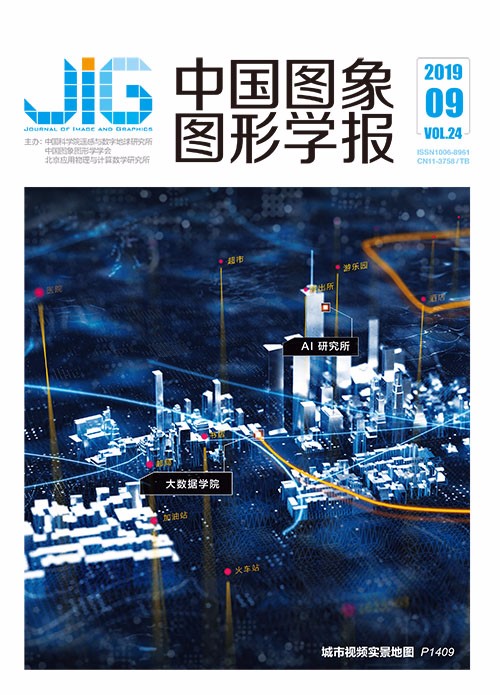
欧元硬币年份检测与识别
摘 要
目的 硬币上的发行年份是判别硬币外观质量的一个重要信息,为了对流通中的欧元硬币进行准确清分,有必要对欧元硬币上的发行年份进行检测与识别。但由于欧元硬币年份数字位姿的不确定性、尺寸的非归一化、其他文字符号的干扰、数字排列方式的多样性使得利用计算机视觉算法实现欧元硬币年份的自动检测、识别与判读存在较大困难。本文针对欧元硬币年份检测与识别的特殊性,提出基于Faster-RCNN(faster-region convolutional neural network)模型的数字检测方法,以及基于聚类算法和先验规则的年份排序算法。方法 首先对训练数据进行增量化处理,例如旋转、缩放等方式极大地扩充训练样本的规模;然后重新训练Faster-RCNN网络模型,使其能够适应硬币中数字的各种位姿和尺寸变化;进而利用K-means聚类算法将获得的数字候选框聚成4类,选取每类中置信度最大的候选框;最后根据预先确定的不同国别硬币的年份排列方式,通过适当的排序算法即可得到正确的年份信息。结果 在自建的实验平台上对欧盟中的12个国家的5种较大币值的硬币进行采样获得4 429幅图像,按1 ∶1比例划分为训练样本和测试样本。实验表明,本文方法的年份检测识别准确率达到89.62%,计算耗时约215 ms,基本满足准确性和实时性要求。结论 本文算法具备实时、鲁棒、高精度的良好性能,具有较高的实际应用价值。
关键词
Detection and recognition of Euro coins year
Guo Xuefeng1,2, Chen Honglei1,2, Zhang Dongbo1,2(1.College of Information Engineering, Xiangtan University, Xiangtan 411105, China;2.Robot Visual Perception and Control Technology National Engineering Laboratory, Changsha 410012, China) Abstract
Objective In the circulation process, the appearance quality of coins decreases due to wear. Thus, recycling coins with worn out appearance is necessary. Generally, the need for coins to be recycled is determined by evaluating the quality of their appearance. The year of coins is an important information to judge their appearance quality. Accurately identifying Euro coins in circulation requires detecting and identifying the year they were issued. However, due to the uncertainty of the position and posture of the Euro coin number, the non-normalization of size, the interference of other characters, and the diversity of number arrangement, one cannot easily realize the automatic detection, recognition, and interpretation of Euro coin year by using computer vision algorithms. Method The method of detecting and recognizing Euro coin year consists of two steps. First, we use Faster-RCNN (faster-region convolutional neural network) to detect the number. The model algorithm is mainly completed in the following four steps:the first step is to send the entire image to be detected into the convolution neural network to obtain the convolution feature map; the second step is to input the feature map into the RPN (region proposal network) to obtain multiple candidate regions of the target; the third step is to use the ROI (region of interest) pooling layer to extract the features of the candidate regions; the fourth step is to use the multi-task classifier to carry out position regression to obtain the precise position coordinates of the target. A self-built experimental platform is used to collect five large coins from 12 EU (European Union) countries. The five currencies are 2 Euros, 1 Euro, 50 Euro cents, 20 Euro cents, and 10 Euro cents. In the collection process, the coins are rotated at small angles continuously and then captured at various angles as far as possible. A total of 4 429 pictures are collected from different angles. The ranking order of the number of coin years can be interpreted using four methods. For a given coin image, the method to be used to interpret the year must be determined first. According to observation, the year arrangement of a certain currency value in a country is fixed. If we can predetermine the currency value and country of a coin, then the corresponding year interpretation rules can be determined. This problem can be solved because the image sizes of coins with different values vary significantly and the coin patterns of different countries are different. Second, the obtained digital candidate boxes are grouped into four categories by using K-means clustering algorithm, and the most confident candidate boxes are selected in each category. Finally, according to the predetermined year arrangement pattern of coins from different countries, the accurate year information can be obtained by an appropriate sorting algorithm. Result On a self-built experimental platform, 4 429 pictures are collected from five types of coins with large currency values from 12 EU countries. The training and test samples are divided at a 1:1 ratio. Experimental results show that the detection accuracy of the method is 89.62% and that the calculation time is approximately 215 ms; these values satisfy the accuracy and real-time requirements. Conclusion The proposed algorithm offers good real-time performance, robustness, and precision and carries high practical application value. Although the detection accuracy of existing algorithms is close to 90%, they can still be improved from two aspects to solve existing error situations. One aspect is to improve the clustering algorithm to achieve compact clustering or clustering in accordance with the law of the year number distribution; doing so can prevent the misdetection of characters or symbols to a certain extent. The other aspect is to further improve the Faster-RCNN network model and the simplified processing algorithm of candidate boxes to improve the detection accuracy of closely arranged digital boxes.
Keywords
|



 中国图象图形学报 │ 京ICP备05080539号-4 │ 本系统由
中国图象图形学报 │ 京ICP备05080539号-4 │ 本系统由